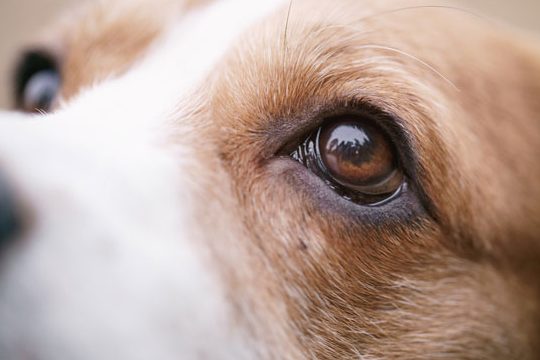Cataracts in Dogs: Causes, Symptoms, and Treatment Options

Cataracts, a common eye condition in dogs, can greatly affect their vision and overall quality of life. Understanding the causes, symptoms, and treatment options for cataracts is essential for dog owners to ensure their furry companions receive the appropriate care and support. In this article, we will delve into the various factors that contribute to the development of cataracts in dogs, the warning signs to look out for, and the available treatment options to manage this ocular condition. By gaining a deeper understanding of cataracts in dogs, pet owners can make informed decisions to prolong their beloved canine’s visual health and well-being.
Exploring Effective Treatment Options for Dogs with Cataracts: From Surgery to Medications, Here’s What Pet Owners Need to Know
Cataracts are a common eye condition that can affect dogs of all ages and breeds. They can cause blurry vision, difficulty seeing in low light, and even blindness if left untreated. As a pet owner, it’s important to understand the different treatment options available for dogs with cataracts. From surgery to medications, here’s what you need to know.
Surgery is often the most effective treatment for dogs with cataracts. During the procedure, a veterinary ophthalmologist will remove the cloudy lens and replace it with an artificial one. This can significantly improve your dog’s vision and quality of life. However, it’s important to note that not all dogs are good candidates for surgery, especially if they have other health issues or are elderly.
If surgery is not an option for your dog, there are some medications that may help slow the progression of cataracts or manage the symptoms. One such medication is a topical eye drop called N-acetylcarnosine (NAC). This antioxidant has been shown to reduce the cloudiness of cataracts and improve vision in some dogs. However, it’s important to consult with your veterinarian before starting any medication.
In addition to surgery and medications, there are some lifestyle changes that can help improve your dog’s vision and overall eye health. Regular eye exams, a balanced diet rich in vitamins and antioxidants, and avoiding exposure to harmful UV rays can all play a role in maintaining good eye health for your dog.
It’s important to remember that not all cataracts require immediate treatment. Some dogs may have small cataracts that do not significantly affect their vision or quality of life. In these cases, your veterinarian may recommend monitoring the cataracts and addressing any changes as necessary.
In conclusion, there are several effective treatment options available for dogs with cataracts. From surgery to medications and lifestyle changes, pet owners have options to improve their dog’s vision and overall eye health. Consult with your veterinarian to determine the best course of action for your furry friend.
Exploring Non-Surgical Options: Effective Ways to Treat Canine Cataracts Naturally
Canine cataracts can significantly impact a dog’s vision and overall quality of life. While surgical options exist to remove cataracts, they may not be suitable for every dog. Fortunately, there are non-surgical alternatives that can effectively treat canine cataracts naturally.
Nutritional Supplements: Promoting Eye Health
One non-surgical option to consider is the use of nutritional supplements. These supplements are formulated with vitamins, minerals, and antioxidants that are beneficial for eye health. Ingredients such as vitamin C, vitamin E, lutein, and zeaxanthin have shown promise in reducing cataract progression and improving overall eye function.
Herbal Remedies: Harnessing Nature’s Healing Power
Another natural approach to treating canine cataracts is through the use of herbal remedies. Certain herbs, such as bilberry, ginkgo biloba, and eyebright, have been traditionally used to promote eye health and reduce the development of cataracts. These herbs contain powerful antioxidants and anti-inflammatory properties that can help improve vision and slow down cataract formation.
Homeopathic Treatments: Stimulating the Body’s Healing Response
Homeopathy offers a gentle yet effective approach to treating canine cataracts. Homeopathic treatments work by stimulating the body’s natural healing response. Substances such as calcarea fluorica, silicea, and cineraria maritima are commonly used in homeopathic remedies for cataracts. These treatments aim to slow down cataract progression and potentially improve vision over time.
Lifestyle Modifications: Promoting Overall Health
In addition to specific treatments, certain lifestyle modifications can contribute to better eye health in dogs with cataracts. Providing a balanced diet rich in nutrients, maintaining a healthy weight, and avoiding exposure to environmental toxins can all help support the body’s natural healing processes and minimize the progression of cataracts.
Regular Eye Examinations: Early Detection is Key
Regardless of the chosen non-surgical treatment, it is crucial to regularly monitor a dog’s eye health through routine eye examinations. Early detection of cataracts or any other eye conditions can allow for timely intervention and a better chance of successful treatment.
Exploring non-surgical options for treating canine cataracts can provide hope and potential solutions for dog owners who prefer to avoid invasive surgical procedures. With the right combination of nutritional supplements, herbal remedies, homeopathic treatments, and lifestyle modifications, dogs with cataracts can maintain or improve their vision and enjoy a better quality of life.
In conclusion,
Cataracts in dogs can be a distressing condition, affecting their vision and overall quality of life. Understanding the causes, recognizing the symptoms, and exploring treatment options are crucial for pet owners to provide appropriate care.
Remember, early detection and prompt veterinary intervention are key to managing cataracts effectively. Regular check-ups, a balanced diet, and a safe environment can also contribute to preventing or delaying the onset of this condition.
As responsible pet owners, it is our duty to prioritize the well-being of our furry friends. By staying informed and proactive, we can ensure that our beloved companions lead happy, healthy lives.
Thank you for taking the time to learn about cataracts in dogs. We hope you found this article informative and useful in caring for your four-legged family members.
Goodbye and take care!




